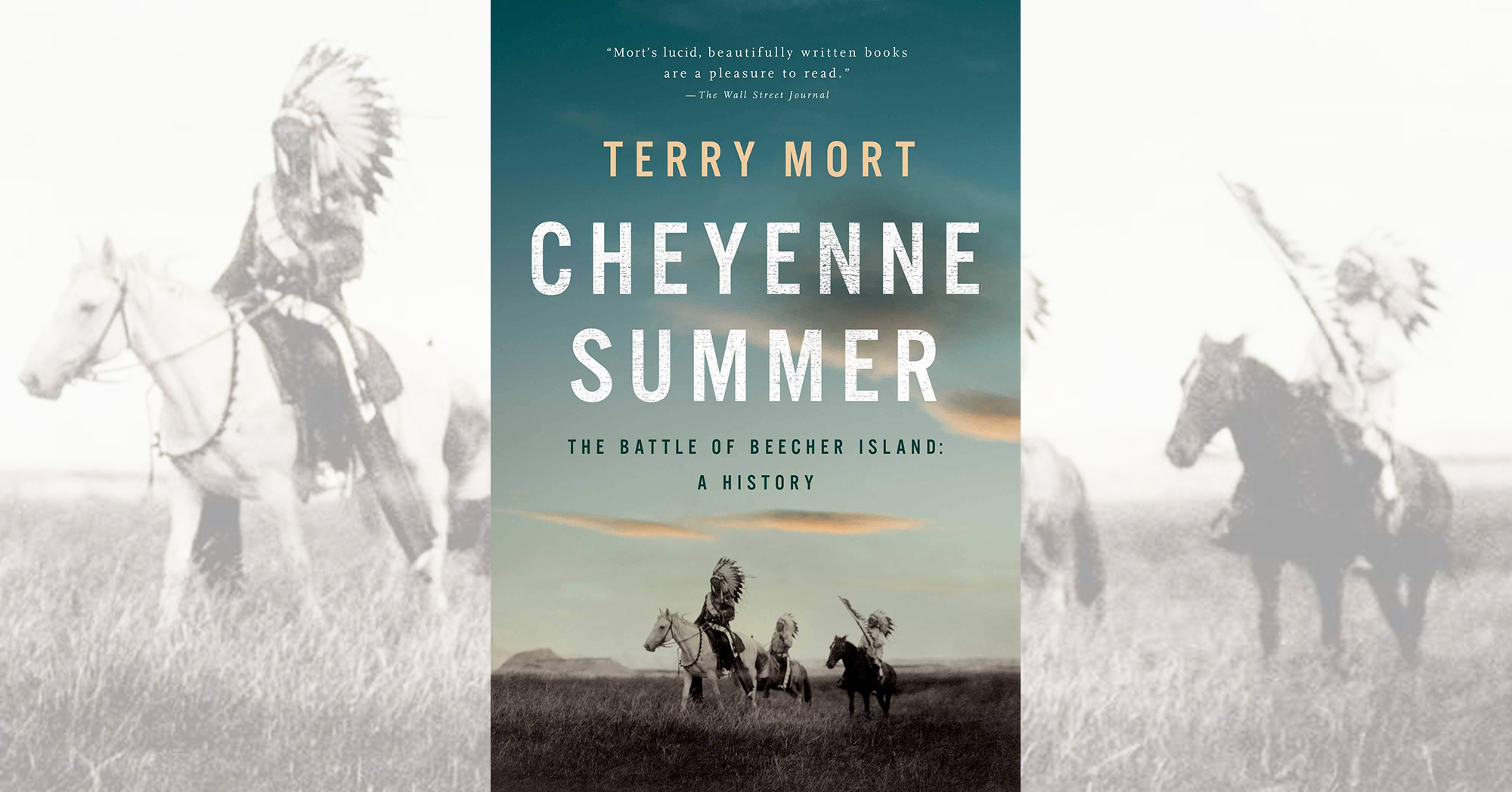Cheyenne Summer: The Battle of Beecher Island: A History, by Terry Mort, Pegasus Books, New York, 2021, $27.95
The Battle of Beecher Island rates as one of the most dramatic, if not significant, clashes of the Indian wars. Touching off in western Colorado Territory on Sept. 17, 1868, the nine-day fight and siege pitted as many as 1,000 Cheyenne attackers against 48 civilian scouts under the command of Major George A. “Sandy” Forsyth and Lieutenant Fred Beecher. Forsyth had the foresight to have his men dig rifle pits and take up a defensive position on a sandbar in the Dry Fork of the Republican River (present-day Arikaree River), but the major was wounded early in the fight, and his second-in-command was mortally wounded. Regardless, the scouts held off repeated charges by the warriors and for seven more days lived off the meat of their dead horses before help arrived (Forsyth had sent out volunteers to seek assistance) in the form of buffalo soldiers of the 10th U.S. Cavalry.
That’s the story of the battle in a nutshell. Terry Mort, of course, spends much more time on the clash, but not as much as might be expected, considering the subtitle. Part I sets the stage as the author introduces the participants (the Cheyennes, the Army and the civilians), and not until P. 195 does he get to Part II, “The Fight at Beecher Island.” Earlier books, notably John Monnett’s The Battle of Beecher Island and the Indian War of 1867–1869, have covered much of the same ground. That said, Mort does such a good job of making the Cheyenne summer of 1868 come alive in Part I that readers won’t be in a hurry to skip ahead to the action and heroics of the battle itself.
The author gives Forsyth a mostly positive review as an officer who had been breveted colonel for his conduct in the Civil War and three years later jumped at the chance for a field command. Unlike Captain William Fetterman, whose command was annihilated in December 1866 in what would become northern Wyoming, Forsyth didn’t display impudence or contempt for the Plains Indians. “Sandy Forsyth didn’t know much about fighting Indians, but at least he realized it,” writes Mort. “He also knew that superior firepower and discipline could overcome numerical disadvantages. He could reasonably assume that 50 well-armed men—men who could shoot well—could defeat, or at least discourage, many times that number of attackers, especially if the men were placed in a reasonably good defensive position.” The major was also delighted to have Beecher with him, describing the young lieutenant as “a splendid specimen of a thoroughbred American and a most valuable man in any position requiring coolness, courage and tact.” To track the Indians the major relied on both Beecher—who had been an experienced outdoorsman in the East and had adapted well to the challenges of the Plains—and civilian scout Abner “Sharp” Grover. That said, when the trio determined the war party they were chasing would soon reunite with the main body of Cheyennes, Forsyth made the command decision to advance and attack rather than withdraw and likely be overwhelmed by a large force of attackers on the open Plains.
The author carefully considers the thinking of the Cheyennes (as best one can with few reports or reminiscences from the Indian side), who likely felt the same urgency as Forsyth. The Cheyenne plan was to attack en masse before the scouts grew alarmed and dug in, for though the Indians had the enemy outnumbered at least 7-to-1, “attacking 50 frontiersmen who were firing from defensive positions would be a formidable and dangerous proposition.” The plan was spoiled by eight young warriors who on their own initiative attacked, aiming to capture the horses and count coup. Forsyth had enough time to get his scouts to the sandbar and establish a strong defensive position, avoiding what could have been a panicked flight. The odds were still daunting, of course, but the scouts, armed with repeaters, were able to thwart a number of Cheyenne charges. As Mort points out, Roman Nose had not yet joined the fight but would later try “to ride over the island and through the scouts.” even if it meant death. “For the Cheyenne,” writes Mort, “it may not have been an important battle, but it was an important story—primarily because of Roman Nose, his exploits and his death.” Standouts on the white man’s side included Forsyth himself, the doomed Fred Beecher (for whom the battle was named), and Jack Stilwell and three other scouts who made the risky ride for help.
—Editor
This post contains affiliate links. If you buy something through our site, we might earn a commission.





